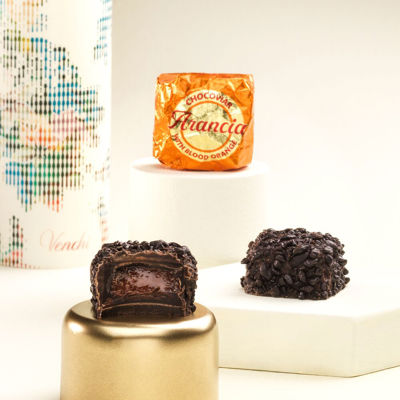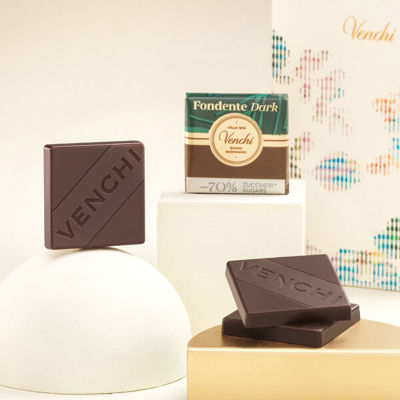Can a diabetic eat chocolate? Chocolate and diabetes have always been surrounded by an aura of mystery. The answer is yes: people with diabetes can eat chocolate. In any circumstance, it is very important for them to consult a doctor before they eat any type of chocolate. But usually, it can be enjoyed as part of a healthy, balanced diet if you stick to a few rules. Keep reading for tips on how to indulge in chocolate safely, even if you have diabetes.
Can you eat dark chocolate with diabetes?
Generally, for those who follow a balanced diet and aren't overweight, chocolate is fine to enjoy, even if you have dietary diabetes (type 2). There are a few critical rules to remember, though. It's important to consume the most suitable kind of chocolate with the correct portion size while keeping a close eye on blood sugar levels.
How do you find the most suitable chocolate for diabetics? First, carefully check each product's ingredients and nutritional values to determine whether it's a high-quality chocolate. Look for products without artificial ingredients and, particularly, without too many carbohydrates.
Is dark chocolate the best choice for people with diabetes?
Dark chocolate’s benefits are numerous. It is also the most suitable chocolate for those who must monitor their blood sugar levels closely.
As well as containing less sugar than milk or white chocolate, the flavonoids contained in dark chocolate can reduce heart disease risks and help lower blood sugar levels — two essential benefits for people living with type 2 diabetes.
To ensure you're eating dark chocolate, choose chocolate with at least 70 percent cocoa. Next, scrutinise any added ingredients: caramel, toffee and other sugary ingredients should be avoided. Those will unnecessarily spike up the sweetness and could wreak havoc on blood sugar levels.
Venchi Dark Chocolate
Chocolate without added sugar for diabetics
The Venchi family is getting bigger! Thanks to years of ongoing research, we've finally struck the perfect balance between reduced sugar content and the mouth-watering flavour that Venchi always strives for. Let us introduce you to an outstanding selection of low sugar chocolate than our classic recipes.
These contain natural ingredients, no artificial sweeteners, and taste simply amazing! Enjoy all the benefits of our 70% less sugar chocolate range, which is ideal for people with diabetes.
Diabetes and hot chocolate: how to enjoy cocoa with less risks
People with diabetes can enjoy hot chocolate in a responsible manner. It is advisable to use unsweetened cocoa powder or a sugar-free version of chocolate in bar form. It's important to control portions and avoid adding sugar or high glycaemic index sweeteners.
Alternatively, low-calorie sweeteners or natural sweeteners like stevia can be used. To improve texture and flavour, one can opt for skim or low-fat milk instead of whole milk. Finally, it is always advisable to monitor blood sugar levels after consuming hot chocolate to ensure there are no unwanted spikes.
What flavours of chocolate are the best?
For extra flavour, choose chocolate bars sprinkled with dried fruit or cocoa nibs. The latter contains iron and minerals such as magnesium, which are very beneficial for people with diabetes.
Or opt for a bar packed with healthy nuts, where the added protein will help the sugar in the chocolate be absorbed more slowly.
Alternatively, for an even lighter dessert option, you can top fruit salads or yoghurt with 75% dark chocoviar, which is a delightfully crunchy kind of "chocolate caviar".
Chocolate and diabetes: when and how much?
As well as choosing the most suitable type of chocolate, it's also essential to understand how much chocolate to eat and the best time of day to do so. These small changes in your eating habits will positively impact your blood sugar levels while still allowing you to enjoy a sweet treat.
An important rule is to make sure that your chocolate intake contains no more than 15-30 grams of carbohydrates.
When should you eat chocolate? It's best to enjoy the sweet treat after a meal. Don't combine with sugary fruits to prevent blood sugars from spiking.































